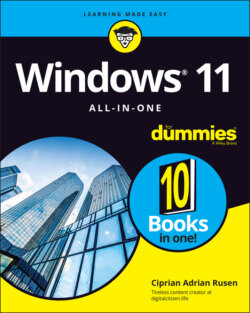Читать книгу Windows 11 All-in-One For Dummies - Ciprian Adrian Rusen - Страница 54
Which Version of Windows Are You Running?
ОглавлениеYou may be curious to know which version of Windows you’re running on your current machine. The easy way to tell is to first log in and press the Windows key on your keyboard. If your desktop is like
Figure 3-1, you're running some version of Windows 10. Note the Windows-logo wallpaper, the large Search box in the lower-left corner next to the Windows icon, and the large tiles on the right side of the Start menu.
Figure 3-2, you're running Windows 11. Note how the icons on the taskbar are centered, not left-aligned as they are in Windows 10. Also, the tiles from the Windows 10 Start menu are gone, replaced by traditional shortcut. And there’s a new Recommended section that lists recent apps and recently opened files, for quick access.
FIGURE 3-1: The desktop and the Start menu in Windows 10.
FIGURE 3-2: The desktop and the Start menu in Windows 11.
If you have Windows 11, here’s how to see your specific edition and version:
1 Click or tap the search icon (magnifying glass) on the taskbar, and type about.Search results appear. At the top of the stack you should see something like About Your PC.
2 Press Enter or click or tap About Your PC.You see an About window with lots of technical details.
3 On the right, scroll down until you get to Device Specifications, shown in Figure 3-3.To the right of System Type, you can see that you're using a 64-bit version of Windows 11.
4 Scroll down a bit more until you see Windows Specifications.In this section, you see the edition of Windows 11, the version, the date it was installed, and the OS build number. The OS build number is useful if you need to contact Microsoft’s tech support service. It helps the support engineer figure out the exact build of Windows 11 and the appropriate patches or steps required to troubleshoot problems with your specific version.
FIGURE 3-3: Full system information is in the About window.
